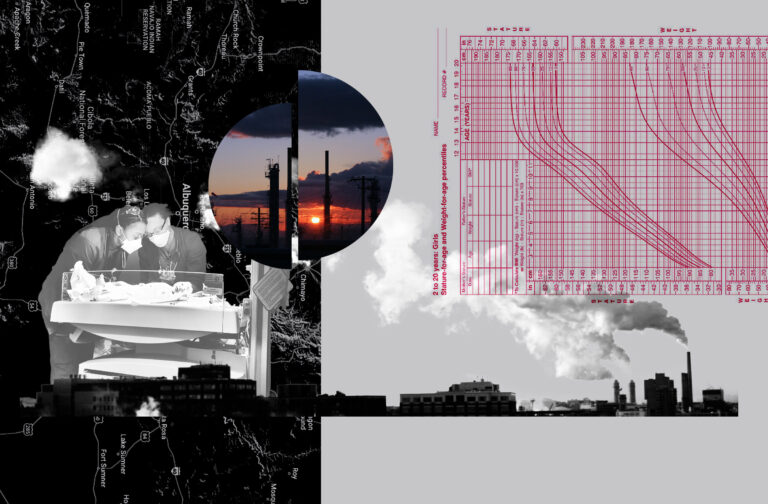Babies born near polluting industries in New Mexico are much more likely to be born small, which is associated with a host of health risks, according to a new study from the University of New Mexico’s Department of Geography and Environmental Studies.
The researchers believe that their study, published in the Environmental Management Journalis the first of its kind in the state. Several areas of New Mexico have air pollution levels that rank among the worst in the country, according to a separate study by the American Lung Association. Air quality is particularly poor in the state’s major metropolitan areas, Albuquerque and Santa Fe, as well as in the southeastern corner, including the Permian Basin, the most productive oil field in the United States.
“The stakes are extremely high,” said Giovanna Rossi, a New Mexico organizer with Moms Clean Air Force, a nonprofit that works to protect children from air pollution. “Low birth weight not only impacts the health of newborns, but can also put children at risk for health problems that last into adulthood.”
The study found a strong link between exposure to five common industrial pollutants during pregnancy and low birth weight. Immediately after birth, low birth weight can lead to respiratory, vision and digestive problems in newborns. And later in life, low birth weight is associated with heart disease, diabetes, high blood pressure and developmental disorders. For this study, low birth weight was defined as less than 2,500 grams, or about 5 pounds, 8 ounces.
The researchers compiled weight data from birth certificates of more than 250,000 infants born in New Mexico between 2008 and 2017. They then built a model of pollution exposure based on the mother’s home address and included data from the Environmental Protection Agency that tracks air quality and emissions from industrial facilities.
The study found that the odds of having a dangerously low birth weight increased the closer a pregnant woman lived to polluting facilities. Black and Latino pregnant women in New Mexico also had higher rates of low birth weight for their infants, the researchers also found.
“The stakes are incredibly high.”
The study did not identify individual industrial sites but noted that the polluters were concentrated in the Albuquerque area. In early June, residents of a neighborhood just south of Albuquerque asked the U.S. Environmental Protection Agency to investigate air pollution that disproportionately affected minorities and low-income areas. The area includes chemical storage sites, oil terminals, a wastewater treatment plant and two Superfund sites, according to the agency. New Mexico Political Report.
Another major concentration of industrial polluters was found near Carlsbad, the study said, and the researchers also included pollution data from more than 50 sites in West Texas, just across the border. Texas and New Mexico are the nation’s first and second largest oil producers. For years, environmental justice activists have been calling attention to the air quality and respiratory impacts of the Permian oil boom.
In a press release, the researchers stressed the need for more studies on public health impacts in the southeastern part of the state, where industrial concentration is particularly high. The University of New Mexico research team is working on a related project, which is studying the links between industrial air pollution and cancer rates.
“This study is a critical call to action for policymakers, agencies and industry leaders to protect pregnant women and their babies from industrial pollution,” Rossi said. “It is critical to strengthen protection from industrial pollution while improving air monitoring and mitigation efforts, particularly in areas identified as high risk.”
Nick Bowlin is a contributing writer for High Country NewsEmail him at nickbowlin@hcn.org or submit a letter to the editor. See our Letters to the Editor policy.


